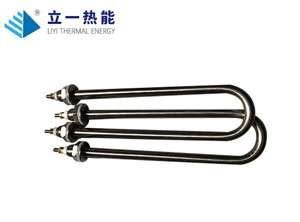As an advanced heating element, the performance of 3D hot bent glass heating tubes exhibits various changes at different ambient temperatures.
In low-temperature environments, firstly, the starting power of the heating tube may increase. This is because when the ambient temperature is low, the heating tube needs to consume more electricity to quickly raise its own temperature to reach the set working temperature. For example, in an environment close to 0 ℃, it may consume 10% -15% more electricity during the start-up phase compared to an environment at 20 ℃. Secondly, the thermal expansion coefficient characteristics of hot bent glass become more critical in low-temperature environments. Due to the large temperature changes, if the heating rate of glass is too fast during the process of starting from low temperature, it may generate significant thermal stress due to the temperature difference between the inner and outer layers. This thermal stress may cause small cracks in the glass, thereby affecting the sealing and service life of the heating tube.

As the ambient temperature increases, when approaching the upper limit of the normal operating temperature range of the heating tube, its heat dissipation efficiency will be affected to some extent. In high temperature environments, such as above 40 ℃, the air around the heating tube itself has a higher temperature, making it difficult to dissipate heat. At this point, the internal temperature of the heating tube may be higher than at normal ambient temperature, which may cause a change in the resistance of the heating tube. According to Ohm's Law, changes in resistance will further affect the heating power. If the heat dissipation is not timely, it may also trigger the activation of the overheating protection device, causing the heating tube to pause working until the temperature drops to a safe range.
Moreover, the humidity at different environmental temperatures can also have an effect on the 3D hot bending glass heating tube. In high humidity environments, condensation may occur on the surface of the heating tube. When condensed water droplets adhere to the surface of the heating tube, it will affect the dissipation of heat on the one hand, because the evaporation of water droplets requires the absorption of heat; On the other hand, if water droplets seep into the interface or sealing part of the heating pipe, it may cause electrical faults such as short circuits. In a dry environment, although there is no risk of condensation, due to the poor thermal conductivity of air, heat dissipation will be relatively slow, which also requires consideration of temperature control and safety issues of the heating tube.
In order to ensure the stable operation of the 3D hot bending glass heating tube at different ambient temperatures, it is necessary to carry out reasonable temperature control and protection design. For example, using an intelligent temperature control system to automatically adjust the heating power according to the ambient temperature; Strengthen sealing design to prevent water vapor from entering; And optimize the heat dissipation structure to improve heat dissipation efficiency, in order to adapt to various complex environmental temperature conditions.



